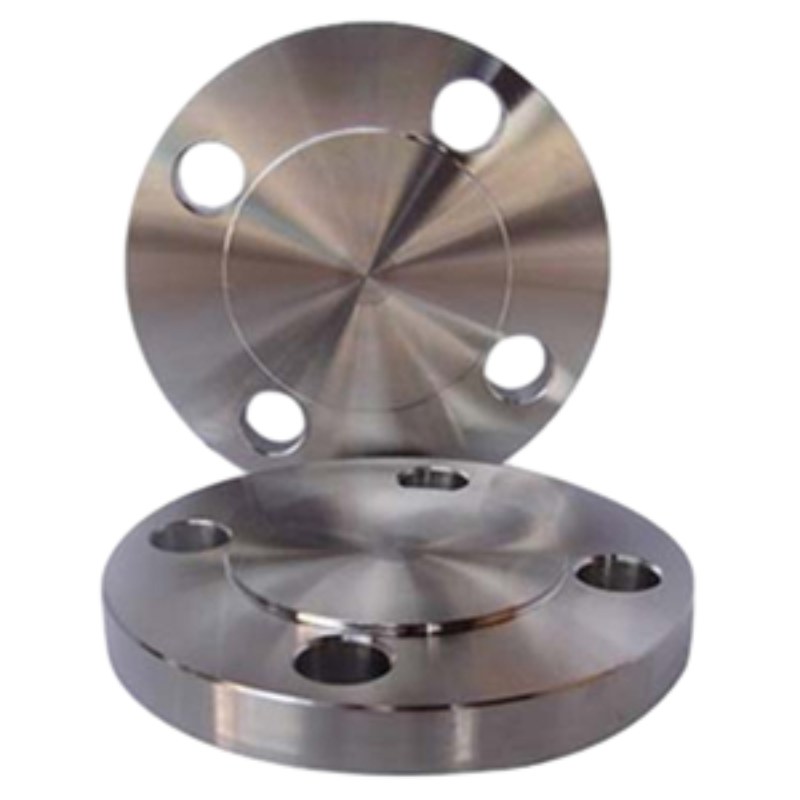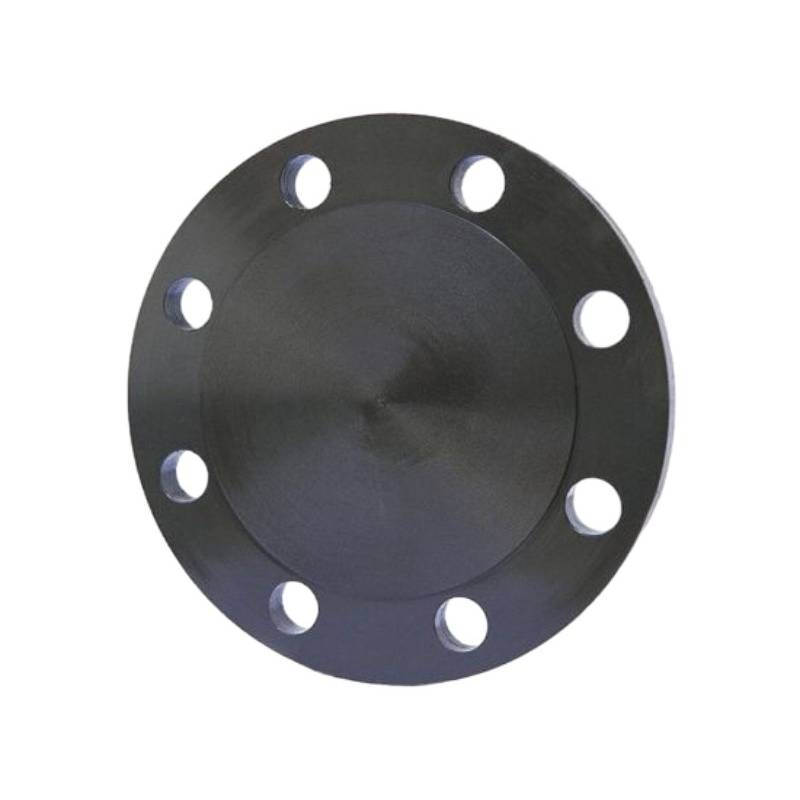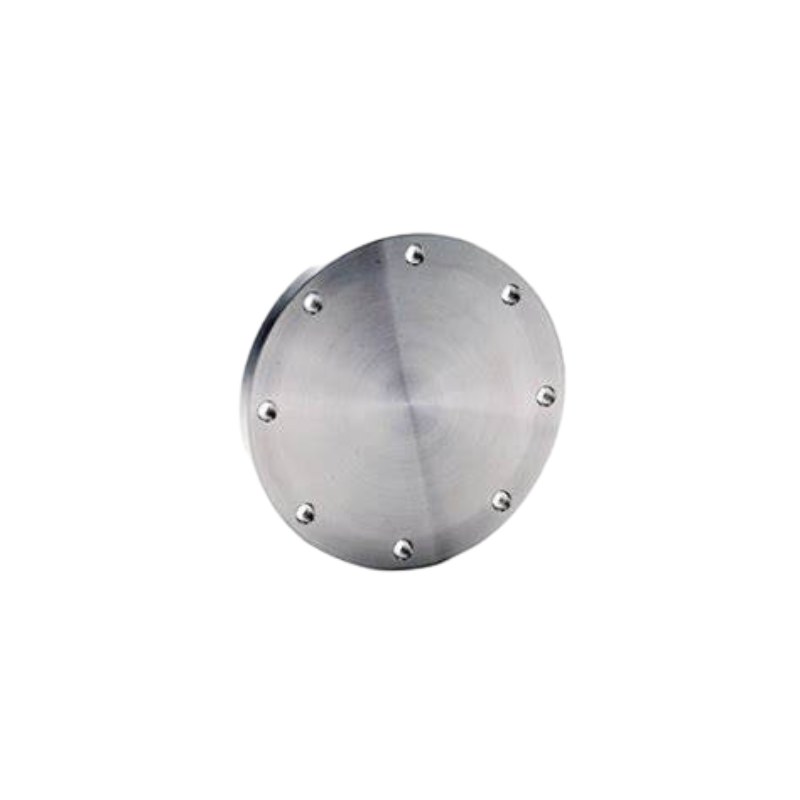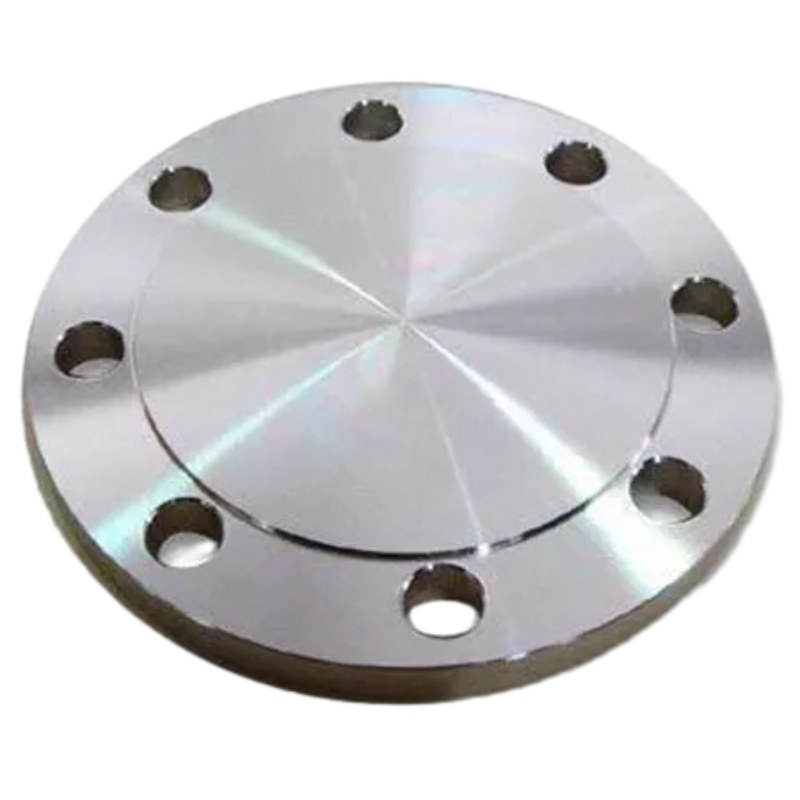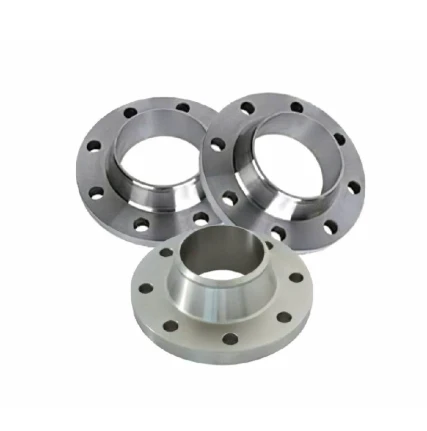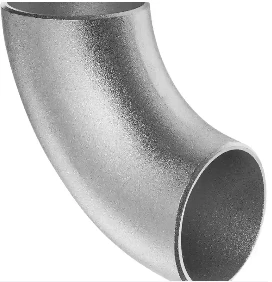-
ການອອກແບບທີ່ເຂັ້ມແຂງ: GOST 12836-67 Blind Flange ມີລັກສະນະຮາບພຽງ, ແຜ່ນວົງມົນທີ່ມີຮູ bolt ທີ່ມີໄລຍະຫ່າງເທົ່າທຽມກັນປະມານ perimeter. ການອອກແບບນີ້ຊ່ວຍໃຫ້ສອດຄ່ອງງ່າຍແລະ bolting ກັບ flange ການຫາຄູ່, ສະຫນອງການແກ້ໄຂການປິດທີ່ເຂັ້ມແຂງແລະຫມັ້ນຄົງສໍາລັບລະບົບທໍ່.
-
ການຜະນຶກທີ່ປອດໄພ: ເມື່ອຕິດຕັ້ງຢູ່ປາຍທໍ່, ໃບຫນ້າຮາບພຽງຂອງ GOST 12836-67 Blind Flange ສ້າງປະທັບຕາທີ່ແຫນ້ນຫນາ, ປ້ອງກັນການຮົ່ວໄຫຼຂອງນ້ໍາແລະຮັກສາຄວາມສົມບູນຂອງລະບົບທໍ່. ຄວາມສາມາດໃນການປະທັບຕາທີ່ປອດໄພນີ້ຮັບປະກັນການປະຕິບັດທີ່ດີທີ່ສຸດແລະຄວາມປອດໄພ, ເຖິງແມ່ນວ່າພາຍໃຕ້ສະພາບການເຮັດວຽກທີ່ຮຸນແຮງ.
-
ຄໍາຮ້ອງສະຫມັກອະເນກປະສົງ: ຈາກໂຮງງານກັ່ນນ້ໍາມັນແລະອາຍແກັສໄປຫາໂຮງງານປຸງແຕ່ງສານເຄມີແລະເຄືອຂ່າຍການແຈກຢາຍນ້ໍາ, GOST 12836-67 Blind Flanges ຊອກຫາຄໍາຮ້ອງສະຫມັກທີ່ຫລາກຫລາຍໃນທົ່ວອຸດສາຫະກໍາທີ່ຫລາກຫລາຍ. ບໍ່ວ່າຈະຖືກນໍາໃຊ້ເພື່ອຈຸດປະສົງການໂດດດ່ຽວ, ການທົດສອບຄວາມກົດດັນ, ຫຼືການປິດຊົ່ວຄາວ, flanges ເຫຼົ່ານີ້ສະຫນອງຄວາມຫນ້າເຊື່ອຖືແລະຄວາມທົນທານໃນລະບົບທໍ່ທີ່ສໍາຄັນ.
-
ການກໍ່ສ້າງທົນທານ: ກໍ່ສ້າງຈາກວັດສະດຸທີ່ມີຄຸນນະພາບສູງເຊັ່ນ: ເຫຼັກຄາບອນ, ເຫລັກສະແຕນເລດ, ຫຼືເຫຼັກປະສົມ, GOST 12836-67 Blind Flanges ສະແດງໃຫ້ເຫັນຄວາມເຂັ້ມແຂງແລະຄວາມທົນທານພິເສດ. ພວກມັນຖືກສ້າງຂື້ນເພື່ອທົນທານຕໍ່ສະພາບການເຮັດວຽກທີ່ຮຸນແຮງ, ລວມທັງສະພາບແວດລ້ອມທີ່ກັດກ່ອນ, ອຸນຫະພູມສູງ, ແລະຄວາມກົດດັນທີ່ຮຸນແຮງ, ຮັບປະກັນການປະຕິບັດໃນໄລຍະຍາວແລະຄວາມຫນ້າເຊື່ອຖື.
-
ວິສະວະກໍາຄວາມຖືກຕ້ອງ: GOST 12836-67 Blind Flanges ດໍາເນີນການເຄື່ອງຈັກທີ່ມີຄວາມແມ່ນຍໍາແລະຂະບວນການວິສະວະກໍາເພື່ອຕອບສະຫນອງຄວາມທົນທານຂອງມິຕິທີ່ເຂັ້ມງວດແລະຄວາມຕ້ອງການດ້ານການສໍາເລັດຮູບ. ຄວາມແມ່ນຍໍານີ້ຮັບປະກັນຄວາມເຂົ້າກັນໄດ້ແລະການແລກປ່ຽນກັບ flanges ມາດຕະຖານອື່ນໆ, ອໍານວຍຄວາມສະດວກໃນການເຊື່ອມໂຍງ seamless ເຂົ້າໄປໃນລະບົບທໍ່ແລະຫຼຸດຜ່ອນຄວາມສ່ຽງຂອງການຮົ່ວໄຫຼຫຼືຄວາມລົ້ມເຫຼວ.
-
ຄວາມງ່າຍຂອງການຕິດຕັ້ງ: ການຕິດຕັ້ງ GOST 12836-67 Blind Flanges ແມ່ນມີປະສິດທິພາບແລະກົງໄປກົງມາ, ຮຽກຮ້ອງໃຫ້ມີການຈັດຕໍາແຫນ່ງທີ່ງ່າຍດາຍແລະ bolting ກັບທ້າຍທໍ່. ຂະຫນາດມາດຕະຖານແລະການອອກແບບຂອງພວກເຂົາສ້າງຄວາມສະດວກໃນການເຊື່ອມໂຍງກັບເຄືອຂ່າຍທໍ່ທີ່ມີຢູ່ແລ້ວ, ຫຼຸດຜ່ອນເວລາການຕິດຕັ້ງແລະຄ່າໃຊ້ຈ່າຍແຮງງານ.
ຄຸນນະສົມບັດທີ່ສໍາຄັນ:
- ການອອກແບບທີ່ເຂັ້ມແຂງສໍາລັບການປິດທີ່ປອດໄພ
- ການປະທັບຕາທີ່ປອດໄພດ້ວຍການອອກແບບຫນ້າແປ
- ຄໍາຮ້ອງສະຫມັກອະເນກປະສົງໃນທົ່ວອຸດສາຫະກໍາ
- ການກໍ່ສ້າງທົນທານສໍາລັບການປະຕິບັດໃນໄລຍະຍາວ
- ວິສະວະກໍາຄວາມແມ່ນຍໍາສໍາລັບການທົນທານໃກ້ຊິດ
- ຄວາມງ່າຍດາຍຂອງການຕິດຕັ້ງດ້ວຍການສອດຄ່ອງງ່າຍດາຍແລະ bolting
Material Selection for GOST 12836-67 Blind Flanges: What You Need to Know
When it comes to GOST 12836-67 blind flanges, selecting the appropriate material is crucial for ensuring functionality, safety, and longevity in various applications. GOST standards, established by the Euro-Asian Council for Standardization, Metrology and Certification, guide the specification of materials to maintain the integrity of piping systems.
Key Considerations for Material Selection:
1. Corrosion Resistance: One of the primary factors in choosing a material for GOST blind flanges is its ability to resist corrosion. Stainless steel (such as 304, and 316) is a popular choice due to its excellent resistance to oxidizing environments. For applications involving aggressive chemicals, alloys like Inconel or Monel are often considered.
2. Pressure and Temperature Rating: GOST blind flanges need to be rated for the specific pressure and temperature conditions they will face. Material selection must align with the service conditions to avoid failure. For high-pressure applications, carbon steel flanges can be suitable, provided they are properly treated or coated.
3. Weldability and Machinability: Depending on installation requirements, the selected material should offer appropriate weldability and machinability. If modifications or on-site fabrication are necessary, choosing materials that can be easily welded is essential.
4. Standards Compliance: Ensure that the materials selected comply with all relevant GOST standards. This not only guarantees quality but also maintains compatibility within the piping system.
5. Cost-effectiveness: While material selection should prioritize performance and safety, cost considerations also play a significant role, especially in large-scale projects. Finding a balance between budget and quality is essential.
Differences Between GOST 12836-67 Blind Flange and Other Flange Standards
When comparing the GOST 12836-67 blind flange with other flange standards, several key differences emerge that reflect the unique characteristics and applications of the Russian standard. The GOST (Gosudarstvennyy Standart) system is a set of regulations and guidelines that govern various industrial products, including blind flanges, which are used to seal off piping systems.
One of the primary differences lies in the dimension and pressure rating classifications. GOST 12836-67 blind flanges are specifically designed according to Russian specifications, with dimensions that may differ significantly from those outlined in ANSI, ASME, or ISO standards. For instance, while ANSI/ASME flanges are typically categorized into nominal pipe sizes (NPS) and pressure classes, GOST flanges feature a unique set of sizes and pressure ratings, making it essential for engineers to select the appropriate type based on regional standards.
Another notable difference is the material composition. The GOST standard emphasizes the use of specific materials that are suited for the harsh Russian climate and industrial requirements. While common materials such as carbon steel and stainless steel are also used in other standards, GOST may specify additional material grades to accommodate unique environmental challenges, including extreme temperatures and corrosive conditions.
Additionally, the manufacturing and testing processes for GOST 12836-67 blind flanges are subject to local industry regulations, which might include stricter quality assurance protocols compared to other international standards. This ensures that the flanges not only meet dimensional specifications but also effectively withstand the pressures and temperatures expected in typical applications within Russia.
In summary, while GOST 12836-67 blind flanges share similarities with other flange standards, their unique dimensions, material requirements, and quality assurance processes set them apart. Understanding these differences is crucial for engineers and designers when selecting flanges for specific applications in diverse geographical locations.






